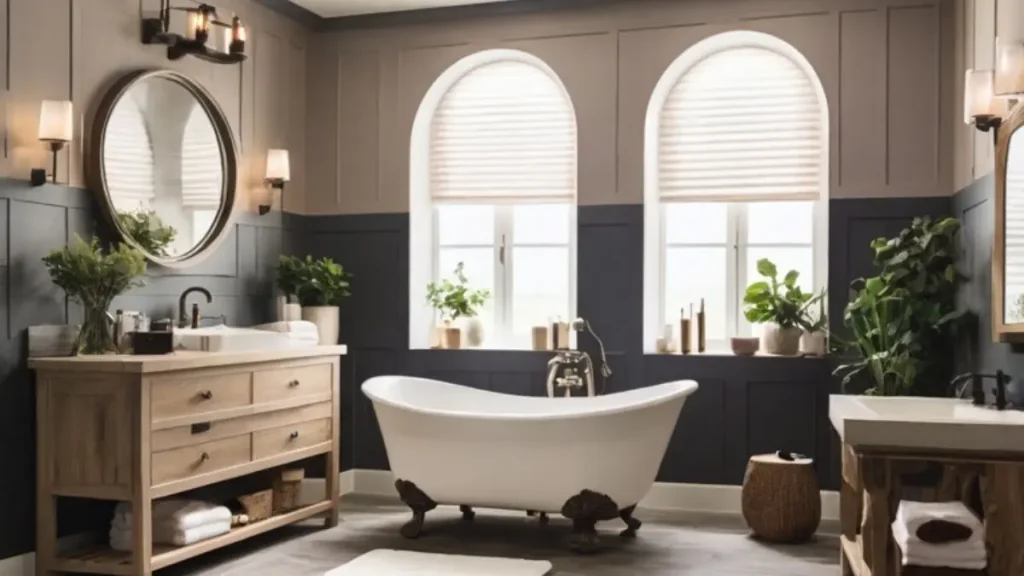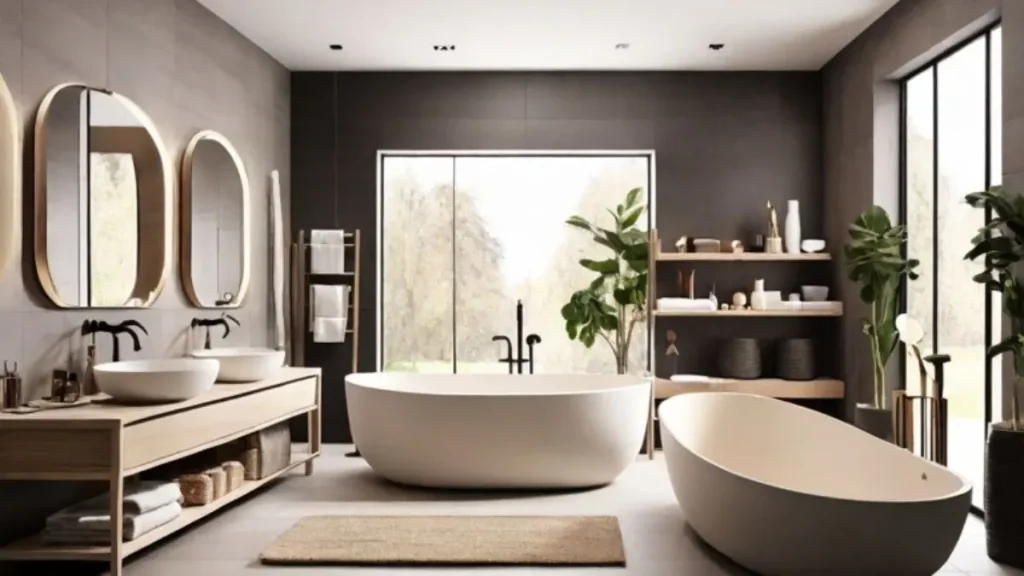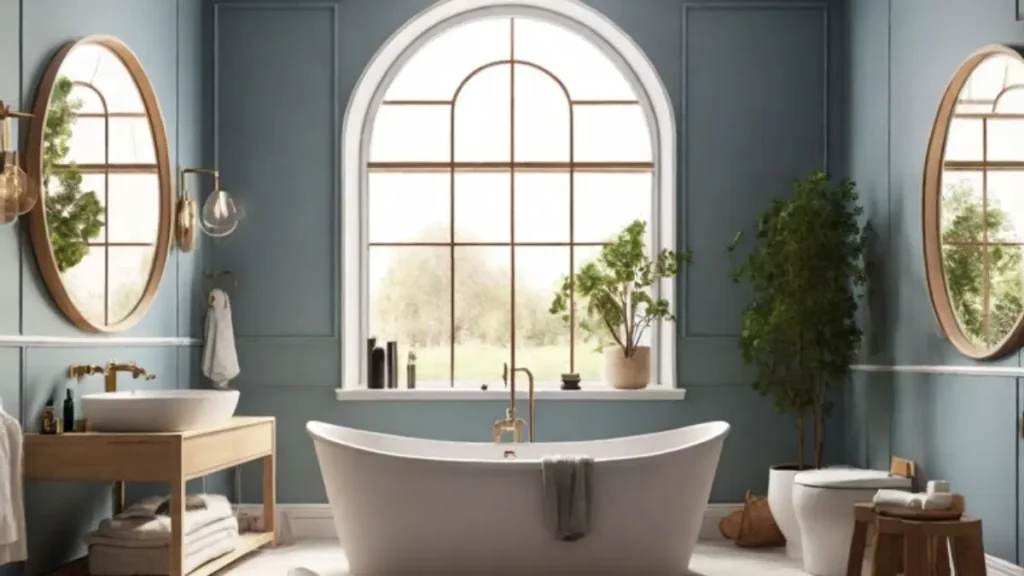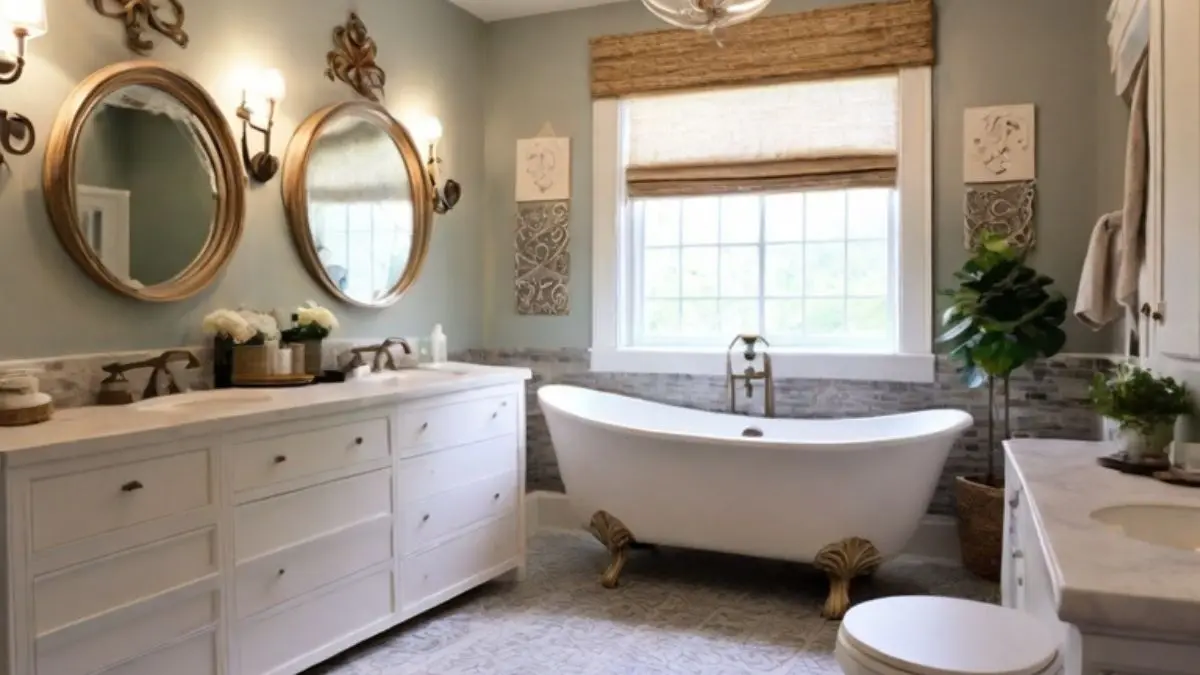So, you’ve decided to dive into a DIY bathroom remodel? That’s fantastic! Remodeling your bathroom on your own can be incredibly rewarding, both in terms of saving money and personal satisfaction.
But before you start tearing out tiles and picking out new fixtures, it’s crucial to have a solid plan in place. This guide will walk you through everything you need to know, from initial planning and budgeting to selecting materials and executing the remodel. Think of it as your friendly roadmap to a successful DIY bathroom transformation. Ready to get started? Let’s dive into the planning stage!
Planning Your DIY Bathroom Remodel

Assessing Your Needs and Goals
First things first—what do you want from your new bathroom? Start by making a list of what you absolutely need versus what would be nice to have. Maybe your current setup is cramped, and you’re dreaming of a more spacious feel.
Or perhaps you’re just looking to update those outdated fixtures. Identifying your priorities will help you focus on what’s most important and avoid getting sidetracked by trendy, but unnecessary, additions.
Example: If you’re dealing with a tiny bathroom, consider space-saving solutions like a corner shower instead of a tub or floating vanities. On the other hand, if you’re tackling a dated design, you might focus on fresh, modern finishes and fixtures.
Design and Layout
Once you’ve got a clear idea of your needs, it’s time to think about design and layout. Start by gathering inspiration from magazines, websites, or Pinterest. Create a mood board or a design folder with all the styles and elements you love. This will help you visualize how you want your space to look and feel.
Next, sketch out a rough layout of your bathroom. You don’t need to be an artist—just a basic sketch with measurements will do. This is where you’ll decide on the placement of major fixtures like the sink, toilet, and shower or bathtub.
Accurate measurements are crucial, so make sure to measure everything twice to avoid any costly mistakes.
Tip: Consider using online design tools or apps that let you create a 3D model of your bathroom. These can be incredibly helpful for visualizing how different elements will fit together.
Permits and Regulations
Before you start buying materials or scheduling demolition, check with your local building authority about permits and regulations. Some areas require permits for major renovations, especially if you’re altering plumbing or electrical systems. Ignoring this step can lead to fines or complications down the road, so it’s best to be proactive.
Real-World Example: A friend of mine started a bathroom remodel without checking permit requirements, only to face delays and extra costs when an inspector flagged their work. It’s always better to do your homework upfront!
Budgeting for Your Remodel

Setting a Realistic Budget
Budgeting is a crucial step in any DIY bathroom remodel. Before you buy a single tile, you need to set a realistic budget. Start by figuring out how much you’re willing to spend overall and then break it down into categories like materials, fixtures, and unexpected costs.
A good rule of thumb is to allocate about 10-20% of your total budget for contingencies—unexpected expenses always seem to pop up!
Tip: Use a spreadsheet to track your budget. It’s easy to adjust and update as you get quotes and make purchases. Plus, it helps you stay on top of your spending and avoid those sneaky budget-busting surprises.
Cost Breakdown
Understanding the typical costs for various elements can help you make informed decisions. Here’s a rough breakdown to give you an idea:
- Materials: Tiles, flooring, and countertops can range widely in price depending on quality and style. On average, you might spend $3-$10 per square foot for tile.
- Fixtures: Sinks, faucets, and toilets vary too. For instance, a new toilet might cost between $100 and $500, while a sink could range from $50 to $300.
- Labor: If you’re hiring professionals for plumbing or electrical work, factor these costs into your budget. DIY can save you money, but some tasks are best left to the pros.
Example: A friend remodeled their bathroom on a tight budget by opting for affordable tiles and fixtures from a discount store. They splurged a little on a high-quality vanity, which gave the space a more luxurious feel without breaking the bank.
Finding Deals and Discounts
Who doesn’t love a good deal? To stretch your budget further, keep an eye out for sales, discounts, and coupons. Home improvement stores often have seasonal sales, and online retailers sometimes offer promotions. Don’t forget to check out clearance sections and outlet stores for high-quality items at a fraction of the cost.
Tip: Sign up for newsletters from home improvement stores. They frequently send out notifications about upcoming sales and special offers.
Choosing Materials and Tools

Materials Selection
Selecting the right materials is key to achieving the look and durability you want. Here are some popular options:
- Tiles: Ceramic and porcelain tiles are durable and come in a wide range of styles. For a modern look, consider subway tiles or large-format tiles. If you’re after a more rustic feel, natural stone tiles might be your go-to.
- Flooring: Vinyl and laminate are budget-friendly and easy to install. If you’re looking for something more upscale, consider natural stone or high-quality ceramic tiles.
- Fixtures: When choosing fixtures like sinks, faucets, and toilets, consider both functionality and style. Water-saving fixtures can help reduce your utility bills, and stylish options can elevate the overall look of your bathroom.
Tip: Bring home samples of tiles and materials before making a final decision. Seeing them in your space can help you get a better idea of how they’ll look in your bathroom’s lighting.
Tools You’ll Need
Having the right tools can make your DIY project go much smoother. Here’s a list of essentials:
- Basic Tools: Screwdrivers, pliers, a tape measure, and a utility knife.
- Specialty Tools: A tile cutter, wet saw (for cutting tiles), and a drill.
- Optional Tools: A laser level for precise measurements and a sander for smoothing surfaces.
Example: When I remodeled my bathroom, I borrowed a tile cutter from a friend. It made cutting tiles a breeze and saved me from the hassle of renting one.
Where to Buy Materials and Tools
Decide where you’ll purchase your materials and tools. Home improvement stores are a great option for a wide selection, but don’t overlook specialty shops and online retailers. Sometimes, online stores offer better deals or have hard-to-find items.
Tip: Check customer reviews and ratings for both materials and tools. They can provide valuable insights into product quality and reliability.
Step-by-Step Remodeling Guide

Preparation and Demolition
Before you start, make sure your space is ready for the transformation:
- Prepare the Space: Cover surfaces and furniture to protect them from dust and debris. Remove any items that might get in the way, like old shower curtains or rugs.
- Demolition: Start by carefully removing old fixtures and tiles. Use a pry bar for removing tiles and a hammer for breaking up larger pieces. Remember to wear safety gear, like gloves and goggles, to protect yourself from debris.
Tip: Label and keep all removed fixtures and hardware if you plan to reuse or donate them. It can save you time and money later.
Plumbing and Electrical Work
Plumbing and electrical work are critical parts of your remodel, and they can be complex:
- Plumbing: If you’re moving fixtures like the sink or toilet, you’ll need to reroute plumbing lines. Turn off the water supply before starting, and if you’re unsure, consider consulting a professional for this part.
- Electrical: Update lighting fixtures or add new outlets carefully. Turn off the power at the circuit breaker before working with electrical components.
Real-World Example: A friend once tried to DIY a bathroom light fixture but ended up with frequent flickering lights. They had to call in an electrician to fix what they’d done wrong. Sometimes, a little professional help is worth it!
Installation
Now for the fun part—putting everything together:
- Flooring Installation: Start with the flooring. Lay out your tiles or other flooring material according to your design. For tiles, apply adhesive, place tiles, and use spacers to ensure even gaps. Let it set according to the manufacturer’s instructions.
- Walls and Tiles: Install wall tiles or panels next. Start from the bottom and work your way up, using a level to keep everything straight. Apply grout once the adhesive has dried.
- Fixtures and Cabinets: Install cabinets, sinks, and other fixtures. Make sure everything is securely attached and aligned correctly.
Tip: Always double-check measurements and alignments before securing items in place. It’s easier to make adjustments early on rather than later.
Finishing Touches
With the major work done, it’s time to add the final details:
- Painting and Sealing: Paint the walls with moisture-resistant paint and seal grout lines to prevent water damage. Allow plenty of drying time.
- Accessories: Add towel racks, mirrors, and other accessories. This is where you can really bring your design to life.
Example: After finishing their remodel, my neighbor added a sleek mirror and some stylish towel hooks. These small touches made the room feel polished and complete.
Common DIY Mistakes and How to Avoid Them

Avoiding Over-Budgeting
One of the biggest pitfalls in a DIY remodel is blowing your budget:
- Stick to Your Plan: Keep track of expenses and stick to your initial budget as closely as possible. Adjustments can be made, but avoid making major changes that could lead to overspending.
- Monitor Costs Regularly: Review your spending regularly to ensure you’re staying within budget.
Tip: Use budgeting apps or tools to help you keep track of expenses and alert you if you’re nearing your budget limit.
Ensuring Proper Measurements
Accurate measurements are crucial for a successful remodel:
- Double-Check Measurements: Always measure twice before cutting or purchasing materials. Mistakes in measurements can lead to costly errors and delays.
- Use the Right Tools: Invest in a quality tape measure and a laser level to ensure precision.
Real-World Example: I once saw a DIYer cut tile pieces incorrectly because they miscalculated their measurements. They ended up with gaps and had to redo parts of the project.
Handling Plumbing and Electrical Work
Plumbing and electrical work can be tricky and are often best handled by professionals:
- Know Your Limits: If you’re not confident in your skills, don’t hesitate to call a licensed plumber or electrician for assistance.
- Follow Safety Guidelines: Always follow safety protocols and guidelines when working with electricity and water.
Tip: When in doubt, seek advice from professionals or consult detailed guides. It’s better to get it right the first time than to fix issues later.
Maintenance and Upkeep

Cleaning and Care Tips
Now that your DIY bathroom remodel is complete, it’s time to keep it looking fresh and new:
- Tile and Grout: Regularly clean tiles with a mild detergent and water. For grout, use a grout cleaner or a mixture of baking soda and water to keep it from discoloring. Avoid harsh chemicals that can damage the grout.
- Fixtures: Wipe down sinks, faucets, and countertops regularly to prevent soap scum and water stains. Use a gentle cleaner suitable for the materials you’ve chosen.
Tip: For a quick and easy clean, use a squeegee to remove water spots from tiles and glass surfaces after each use.
Regular Check-Ups
Keeping an eye on your remodel’s performance is crucial:
- Inspect for Leaks: Regularly check under sinks and around fixtures for any signs of leaks. Early detection can prevent more serious water damage.
- Monitor Wear and Tear: Keep an eye on high-traffic areas for signs of wear, such as loose tiles or fading grout. Address issues promptly to avoid bigger problems.
Real-World Example: A friend of mine found a small leak under their sink after their remodel. They fixed it right away, which saved them from more significant damage and repairs later.
Conclusion
Congratulations on completing your DIY bathroom remodel! You’ve navigated the planning, budgeting, material selection, and installation—no small feat. With your new bathroom looking fantastic, the final step is to maintain and enjoy your hard work.
Remember, remodeling can be a complex process, but with careful planning and attention to detail, you can achieve professional-looking results on your own. Keep up with regular maintenance to ensure your bathroom stays in top shape for years to come.
Have you completed a DIY bathroom remodel? We’d love to hear about your experience! Share your stories, tips, or questions in the comments below. And if you’re planning your next project, stay tuned for more helpful guides and tips.



